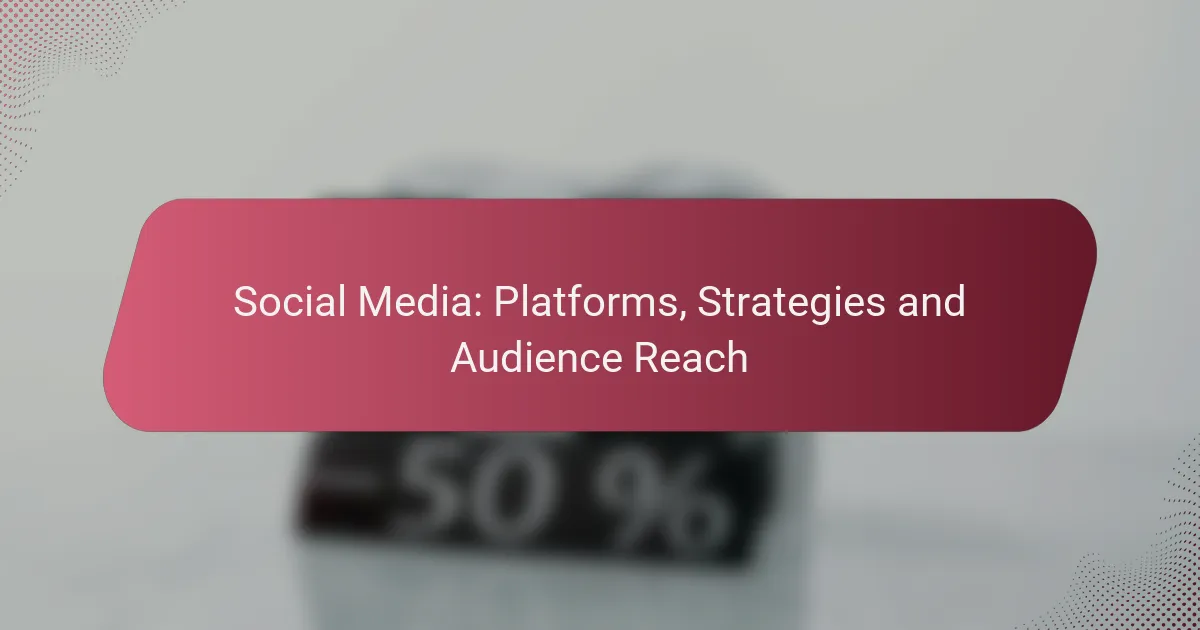Social media has transformed the way businesses connect with their audiences, offering diverse platforms that cater to different demographics and engagement styles. Crafting a successful strategy requires a deep understanding of your target audience, clear goal-setting, and a commitment to creating engaging content that fosters meaningful interactions. By leveraging these elements, businesses can enhance their online presence and build lasting relationships with their followers.
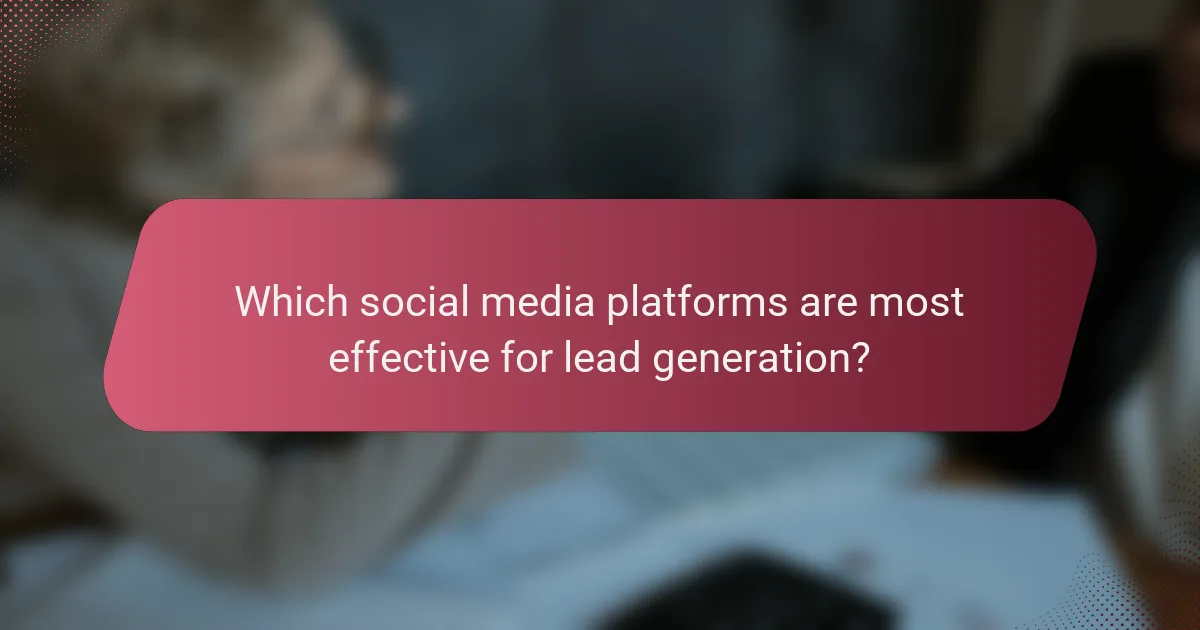
Which social media platforms are most effective for lead generation?
Effective lead generation can be achieved through various social media platforms, each offering unique advantages. The choice of platform often depends on the target audience and the nature of the business.
Facebook for targeted advertising
Facebook is a powerful tool for targeted advertising, allowing businesses to reach specific demographics based on interests, behaviors, and location. With over 2.8 billion monthly active users, it provides extensive reach for lead generation.
Utilizing Facebook Ads, companies can create tailored campaigns that resonate with their ideal customers. It’s crucial to monitor ad performance and adjust targeting to optimize results, ensuring that marketing budgets are spent effectively.
LinkedIn for B2B networking
LinkedIn is the premier platform for B2B networking, making it ideal for lead generation in professional services and industries. With a focus on business professionals, it allows for direct outreach and relationship building.
Companies can leverage LinkedIn’s features such as sponsored content and InMail to connect with decision-makers. Regularly sharing valuable content can also enhance visibility and establish authority within a specific industry.
Instagram for visual engagement
Instagram excels in visual engagement, making it suitable for brands that can showcase their products or services through appealing imagery. With a user base that favors visual content, businesses can attract leads through eye-catching posts and stories.
Utilizing Instagram’s shopping features can directly convert engagement into sales. Brands should focus on high-quality visuals and consistent branding to capture attention and encourage user interaction.
Twitter for real-time interaction
Twitter is effective for real-time interaction, allowing brands to engage with their audience instantly. This platform is ideal for sharing updates, promotions, and responding to customer inquiries quickly.
Using relevant hashtags can increase visibility and attract potential leads. Regularly participating in trending conversations can also enhance brand presence and foster community engagement.
Pinterest for niche marketing
Pinterest is particularly effective for niche marketing, especially in industries like home decor, fashion, and food. Users often turn to Pinterest for inspiration, making it a valuable platform for lead generation through visually appealing pins.
Creating informative and attractive pins that link back to a website can drive traffic and generate leads. Brands should focus on keyword optimization and engaging visuals to maximize their reach on this platform.
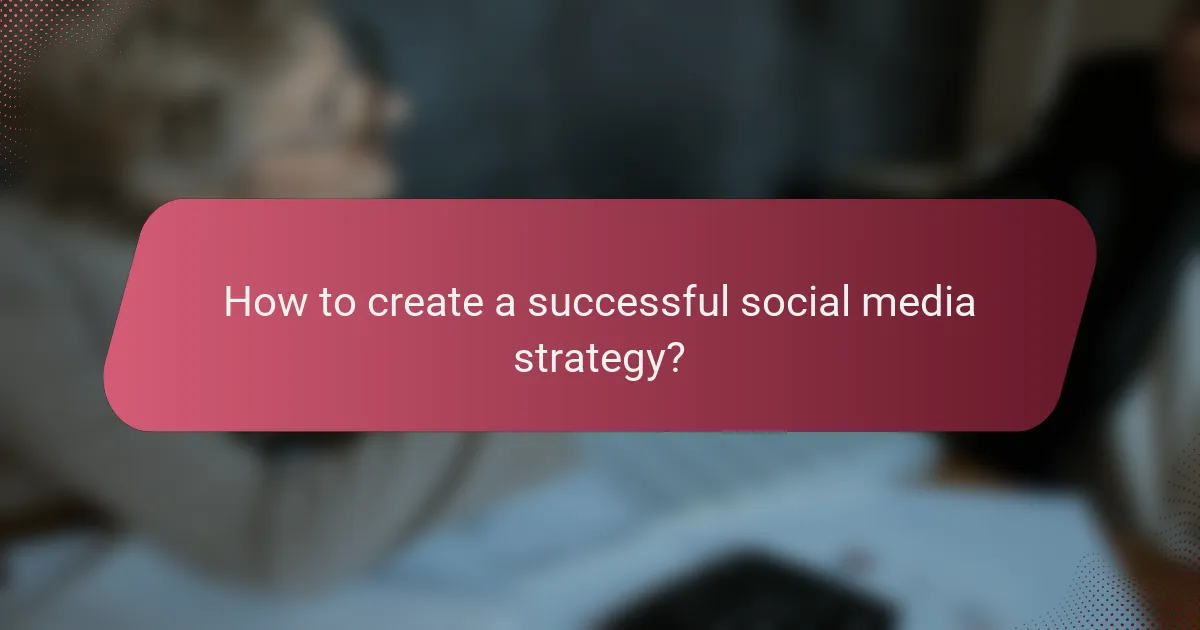
How to create a successful social media strategy?
A successful social media strategy involves setting clear goals, understanding your audience, selecting the right platforms, planning content, and measuring results. By following these steps, businesses can effectively engage with their audience and enhance their online presence.
Define clear objectives
Start by establishing specific, measurable objectives that align with your overall business goals. Common objectives include increasing brand awareness, generating leads, or boosting customer engagement. Aim for a mix of short-term and long-term goals to guide your strategy.
For instance, a short-term goal might be to increase social media followers by 20% within three months, while a long-term goal could involve enhancing customer loyalty over the next year.
Identify target audience
Understanding your target audience is crucial for tailoring your content and messaging. Create detailed buyer personas that include demographics, interests, and online behaviors. This will help you craft content that resonates with your audience.
Consider conducting surveys or analyzing existing customer data to refine your audience profiles. Knowing who your audience is will enable you to engage them more effectively.
Choose appropriate platforms
Selecting the right social media platforms is essential for reaching your audience. Each platform has its unique user base and content style; for example, Instagram is ideal for visual content, while LinkedIn is better suited for professional networking.
Evaluate where your target audience spends their time and focus your efforts on those platforms. It’s often more effective to excel on a few platforms than to spread your resources too thin across many.
Develop a content calendar
A content calendar helps you plan and organize your posts in advance, ensuring consistency and relevance. Outline key dates, themes, and types of content to be shared, such as promotional posts, educational articles, or user-generated content.
Consider using tools like Google Calendar or dedicated social media management software to streamline this process. Regularly review and adjust your calendar based on audience engagement and feedback.
Analyze performance metrics
Regularly analyzing performance metrics is vital for understanding the effectiveness of your social media strategy. Key metrics to track include engagement rates, reach, and conversion rates. Use analytics tools provided by the platforms or third-party options to gather insights.
Set aside time monthly or quarterly to review these metrics and adjust your strategy accordingly. This will help you identify what works and what doesn’t, allowing for continuous improvement in your social media efforts.
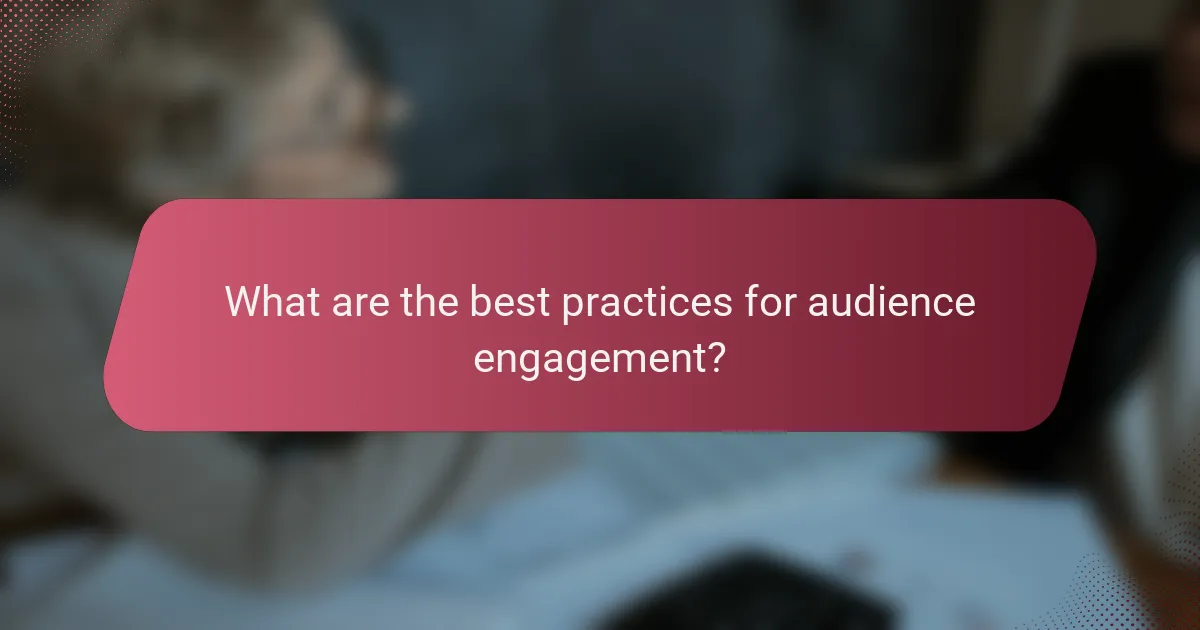
What are the best practices for audience engagement?
Effective audience engagement involves creating meaningful interactions that resonate with your followers. By employing strategies that encourage participation and feedback, you can strengthen your community and enhance brand loyalty.
Utilize interactive content
Interactive content, such as polls, quizzes, and surveys, can significantly boost audience engagement. These formats invite users to participate actively rather than passively consuming information, making them feel more connected to your brand.
Consider incorporating tools like Instagram Stories polls or Facebook Live quizzes to gather insights and opinions from your audience. This not only increases engagement but also provides valuable data on customer preferences.
Respond to comments promptly
Timely responses to comments can foster a sense of community and show that you value your audience’s input. Aim to reply to comments within a few hours to maintain an active conversation and encourage further interaction.
Utilize notifications to stay on top of comments across platforms. Acknowledging both positive and negative feedback demonstrates transparency and builds trust with your audience.
Host live Q&A sessions
Live Q&A sessions allow for real-time interaction with your audience, making them feel heard and valued. These sessions can be conducted on platforms like Instagram Live or Facebook Live, where followers can ask questions directly.
Promote these events in advance to maximize participation. Prepare a few key topics to discuss, but remain flexible to address audience inquiries as they arise, ensuring a dynamic and engaging experience.
Share user-generated content
User-generated content (UGC) showcases your audience’s creativity and reinforces community bonds. Sharing photos, testimonials, or stories from your followers not only provides authentic content but also encourages others to contribute.
Establish a specific hashtag for your brand to make it easier for users to share their experiences. Highlighting UGC can also serve as social proof, enhancing your brand’s credibility and appeal.
Run contests and giveaways
Contests and giveaways are effective strategies to boost engagement and attract new followers. By offering enticing prizes, you can encourage users to participate and share your content with their networks.
Clearly outline the rules and entry methods, such as tagging friends or sharing posts. Ensure that the prizes are relevant to your audience to maximize interest and participation, while also adhering to platform guidelines and regulations.
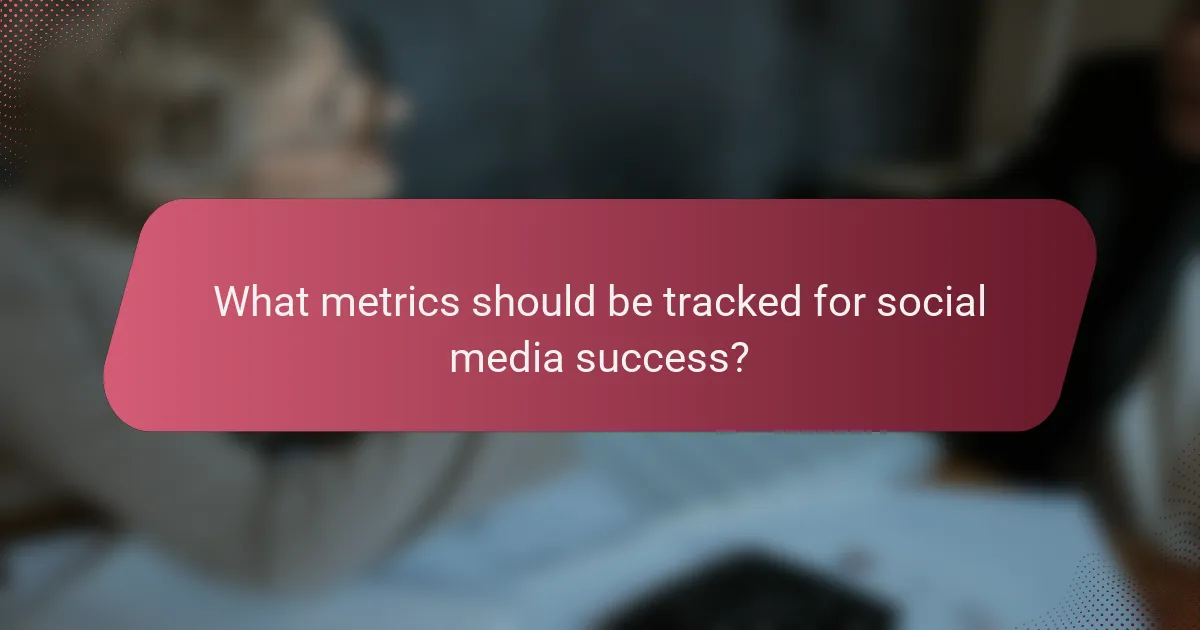
What metrics should be tracked for social media success?
To measure social media success, focus on key metrics such as engagement, reach, and conversion rates. These indicators provide insights into how well your content resonates with your audience and drives desired actions.
Engagement Metrics
Engagement metrics include likes, shares, comments, and overall interaction rates. High engagement indicates that your audience finds your content valuable and is willing to interact with it. Aim for a consistent engagement rate of around 1-5% for most platforms.
To improve engagement, consider using compelling visuals, asking questions, or running polls. Regularly analyze which types of posts generate the most interaction and adjust your strategy accordingly.
Reach and Impressions
Reach refers to the number of unique users who see your content, while impressions count the total number of times your content is displayed. Tracking both helps you understand your audience size and the effectiveness of your distribution strategy.
For optimal reach, consider posting during peak times when your audience is most active. Utilize platform analytics to identify these times and tailor your posting schedule to maximize visibility.
Conversion Rates
Conversion rates measure the percentage of users who take a desired action, such as signing up for a newsletter or making a purchase. This metric is crucial for assessing the effectiveness of your social media campaigns in driving business goals.
To enhance conversion rates, ensure your calls to action are clear and compelling. Test different approaches, such as varying the wording or placement of your links, to determine what resonates best with your audience.
